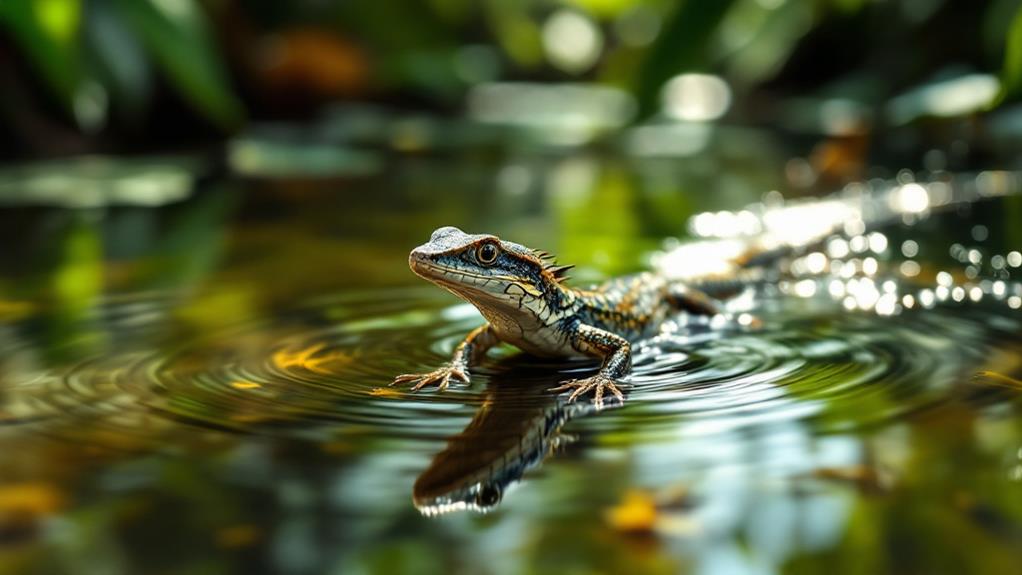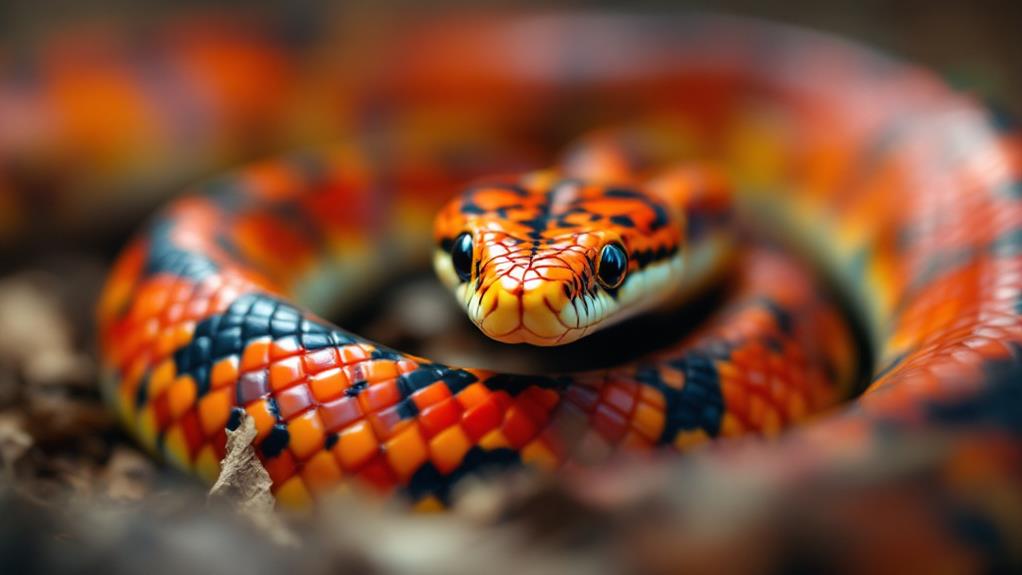The Most Bizarre and Scary Snakes in the World: Nature’s Strangest Serpents
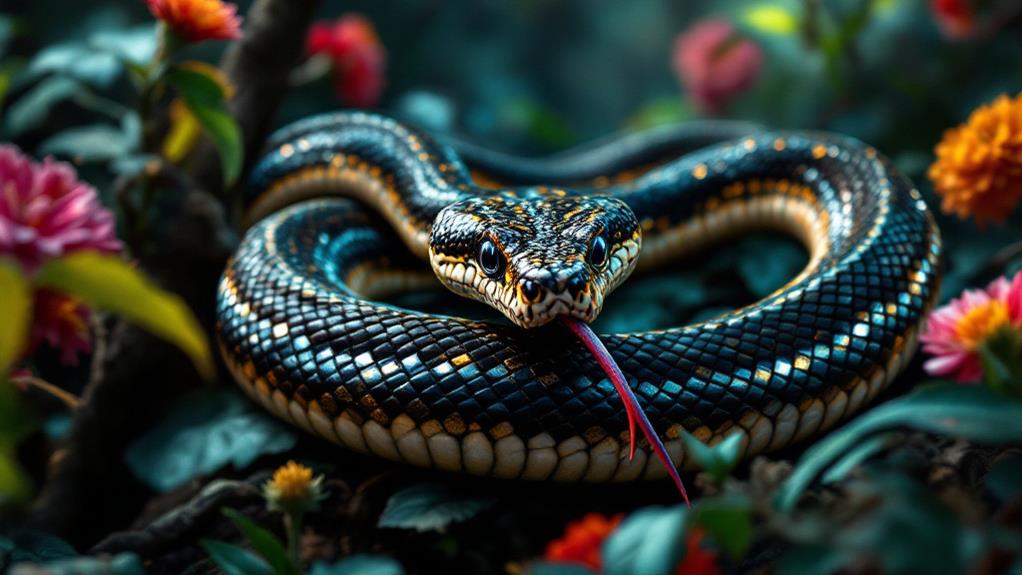
You'll encounter some truly bizarre serpents in nature's repertoire. Southeast Asia's flying snakes can glide through the air, while the tentacled snake uses its unique appendages for aquatic ambushes. Two-headed snakes, though rare, exist as genetic anomalies. The Sahara's horned vipers blend seamlessly with sand and possess potent venom. Perhaps most unusual are the translucent-skinned ghost snakes, which seem to radiate in the dark. These extraordinary creatures challenge our perceptions of what snakes can be, showcasing nature's incredible diversity. Venture further into this world of strange serpents, and you'll uncover even more surprising adaptations and behaviors.
Flying Snakes of Southeast Asia
While they can't truly fly, the so-called flying snakes of Southeast Asia are experts of aerial gliding. You'll find these extraordinary reptiles in the forests of Thailand, Malaysia, and Indonesia. They belong to the genus Chrysopelea and are known for their unique ability to launch themselves from tree branches and glide through the air.
When you observe a flying snake in action, you'll notice its incredible undulating glide. As it leaps, the snake flattens its body, creating a concave shape that acts like a parachute. This allows it to cover distances of up to 100 meters in a single glide. The snake's aerodynamic body and precise movements enable it to change direction mid-air and land accurately on its target.
In their camouflaged habitat, flying snakes blend seamlessly with their surroundings. Their coloration varies from green to black, helping them remain hidden among the leaves. While they're mildly venomous, they pose little threat to humans. These snakes primarily feed on lizards, birds, and small mammals, using their gliding ability to surprise prey or escape predators.
Tentacled Snake's Aquatic Ambush
Few snakes are as uniquely adapted to aquatic life as the tentacled snake (Erpeton tentaculatum). You'll find this bizarre creature in the freshwater habitats of Southeast Asia, where it's perfected its underwater hunting tactics. The snake's most distinctive feature is a pair of short, scaly tentacles protruding from its snout, which it uses to detect prey in murky waters.
The tentacled snake's camouflage in still waters is extraordinary. It'll often remain motionless for hours, its body resembling a submerged branch. When fish approach, you'd be amazed by its lightning-fast strike. Here's how this ambush predator operates:
- It curves its body into a J-shape, creating a slight current.
- As fish swim by, the snake predicts their escape route.
- It strikes not at the fish's current position, but where it'll be in milliseconds.
This calculated hunting method is so precise that the tentacled snake rarely misses its target. You'll be fascinated to learn that it's the only snake known to anticipate prey movement, making it one of nature's most efficient aquatic predators.
Two-Headed Serpents: Nature's Anomaly
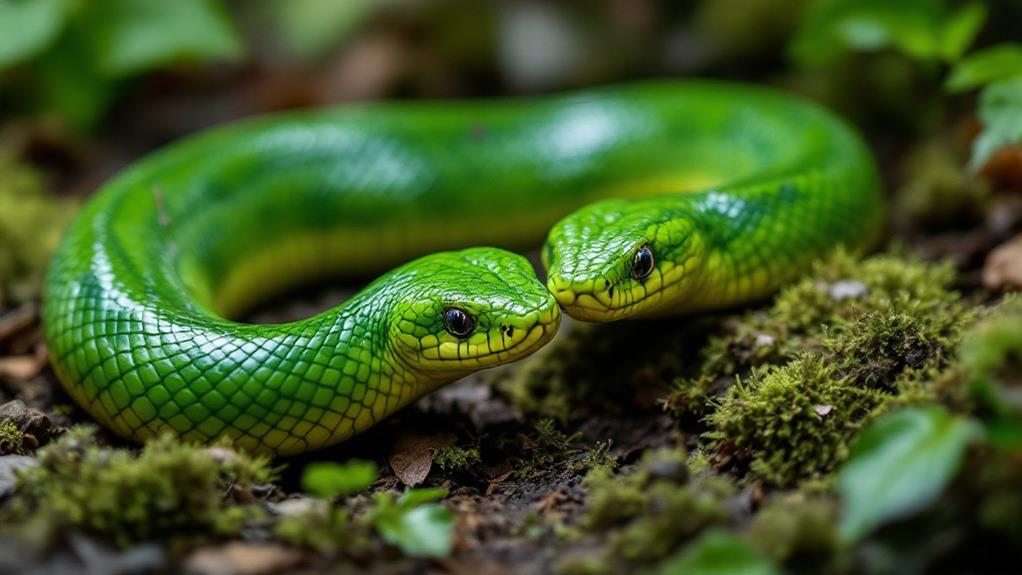
From the depths of murky waters, we surface to investigate one of nature's rarest snake phenomena. Two-headed serpents, while not a distinct species, are a fascinating anomaly that occasionally occurs in various snake species worldwide. These unusual creatures result from peculiar genetics and developmental intricacies during the embryonic stage.
You might wonder how these snakes survive with two heads. Surprisingly, some can live for years, though they often face challenges. Each head typically has its own brain, controlling one side of the body. This can lead to conflicting movements and difficulty coordinating actions like hunting or escaping predators. In most cases, one head becomes dominant, taking charge of feeding and movement.
While two-headed snakes are rare in the wild, they're more commonly found in captivity due to inbreeding. You'll find that these serpents often become popular attractions in zoos and reptile exhibits. Despite their intriguing appearance, it's important to remember that they're not a separate species but rather a genetic quirk of nature, offering a glimpse into the nuances of animal development.
Horned Vipers of the Sahara
The Sahara's deadly inhabitants include the distinctive horned viper, an expert of desert camouflage. You'll find these venomous serpents lurking beneath the sand, their horn-like scales above their eyes giving them their iconic name. These vipers have evolved exceptional desert adaptations that allow them to thrive in one of the world's harshest environments.
The horned viper's venomous characteristics are both fascinating and lethal. Here's what makes them so dangerous:
- Potent hemotoxic venom that destroys blood cells and tissues
- Long, hinged fangs that deliver venom deep into prey
- Sidewinding locomotion for swift movement across hot sand
You'd be wise to watch your step in the Sahara, as these snakes are proficient in concealment. Their sandy coloration blends seamlessly with their surroundings, making them nearly invisible to the untrained eye. When threatened, they'll hiss loudly and adopt a defensive S-shaped posture before striking.
Despite their fearsome reputation, horned vipers play a vital role in the desert ecosystem, controlling rodent populations and serving as prey for birds and other predators. Respect their space, and you'll likely avoid a dangerous encounter with these outstanding desert dwellers.
Translucent-Skinned Ghost Snakes
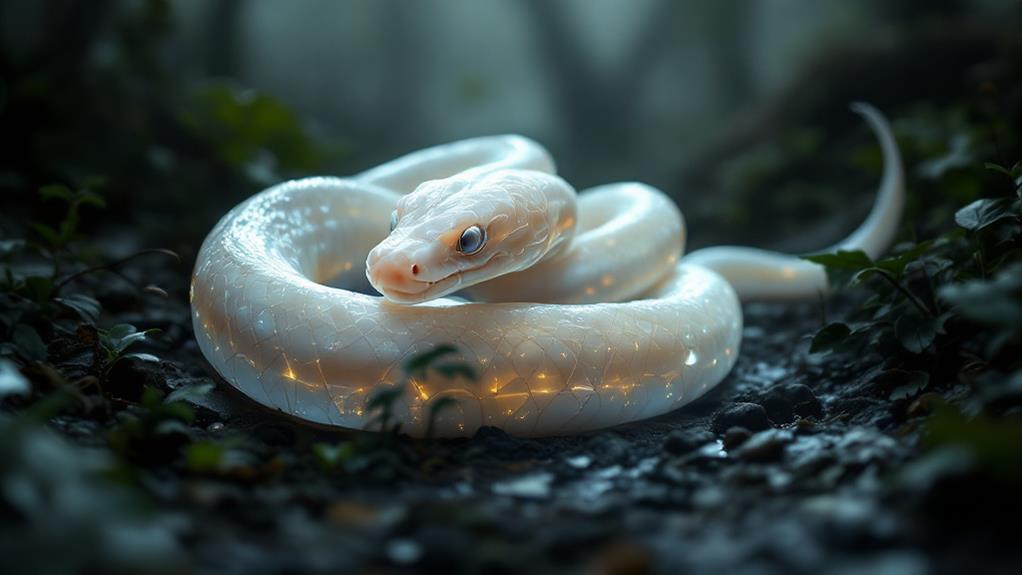
Mysteries of the reptile world come alive with translucent-skinned ghost snakes. These elusive creatures possess extraordinary camouflage abilities, thanks to their near-transparent skin that reveals their internal organs. You'll find them slithering through dense rainforests, particularly in Madagascar and parts of Southeast Asia.
Ghost snakes aren't just visually striking; they're also formidable predators. Their unique venom composition sets them apart from other serpents. Unlike typical snake venom that targets the nervous system, ghost snake venom affects the circulatory system, causing rapid blood clotting in their prey.
When you encounter a ghost snake, you'll notice its eerie, otherworldly appearance. Their translucent skin gives them a ghostly glow in certain lighting conditions, enhancing their ability to blend into their surroundings. This adaptation allows them to ambush unsuspecting prey and avoid detection by predators.
Scientists are still uncovering the secrets of these enigmatic reptiles. Their unusual physiology and venom properties make them subjects of intense research, potentially leading to breakthroughs in medical treatments for blood disorders. Ghost snakes remind us that nature's most bizarre creatures often hold the key to scientific advancements.


